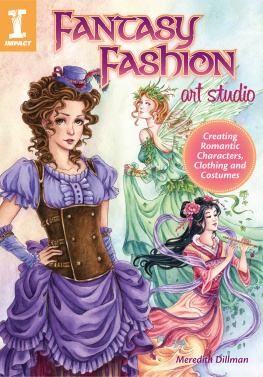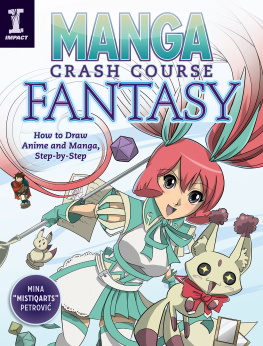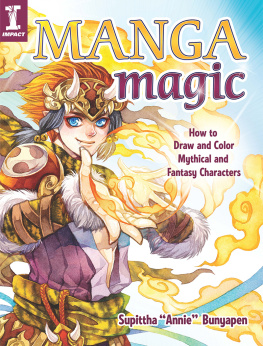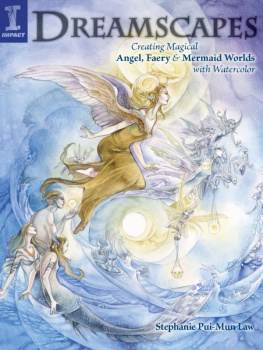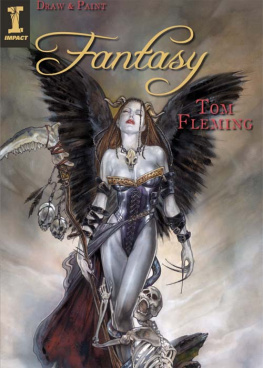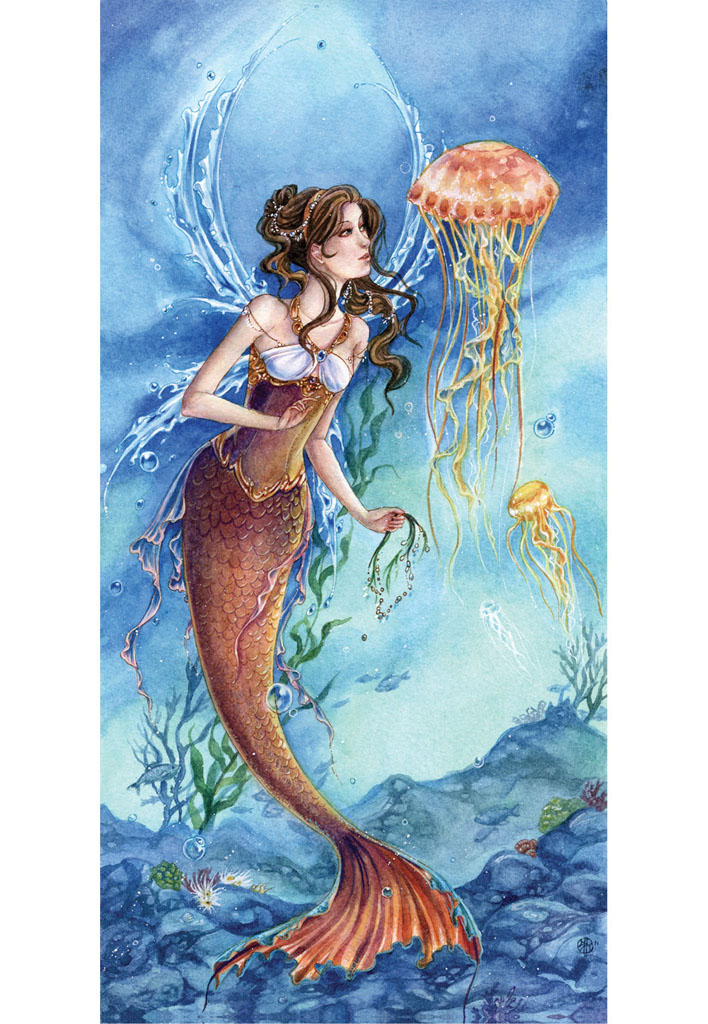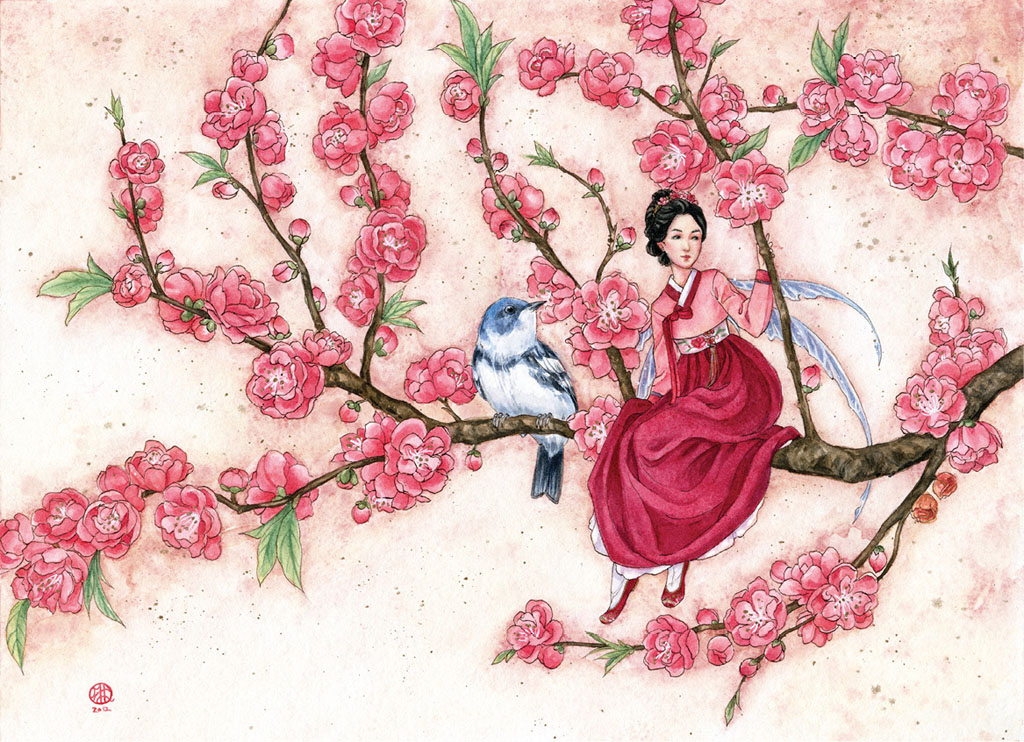Thank you for purchasing this Artist Network eBook.
Sign up for our newsletter and receive special offers, access to free content, and information on the latest new releases and must-have firearms resources! Plus, receive a coupon code to use on your first purchase from NorthLightShop.com for signing up.
or visit us online to sign up at
http://artistsnetwork.com/ebook-promo
Introduction
I have been fascinated by fashion and historical costumes for a long time. When I was introduced to the world of Pre-Raphaelite paintings as a teen, I longed to be able to recreate the romantic medieval dresses to one day wear. Although sewing is not my forte, I have enjoyed painting fantastic creations that I couldnt otherwise bring to life.
As my artwork changed from anime-inspired to fantasy and fairies, I also found inspiration in the natural world. Visiting Japan made me appreciate the simple, yet elegant designs and patterns on kimonos and woodblock prints. At times my favorite styles have all come together to form a beautiful new style such as the late eighteenth century Aesthetic, Art Nouveau, and Arts and Crafts movements. These combined the twisting vines found in nature with myths and legends and aspects of Asian art.
The best part of fantasy art is being able to draw whatever you imagine. You are free to start with a historical inspiration and make it as fantastical as you desire or combine multiple themes to create something new. If you imagine a character as a forest fairy in ancient Chinayou can make it happen!
Each section of this book contains a painting demonstration on a different theme or historical period. Use the information in each section as a jumping-off point to inspire your own illustrations. Once you know the basics, you can use this information to research historical examples of any style in further detail.
The paints I use throughout the book are mainly made by M. Graham. I prefer to use them because of the high pigment content and honey binder. I find they are brighter than other watercolors Ive used and they dont dry out completely when I squeeze them onto my palette. I also use Winsor & Newton paints when I need a greater variety of colors.
Materials
- 14" 6mm flat brush
- nos. 0, 1, 2, 4, 8 round sable or synthetic sable brushes
- hot-pressed watercolor paper
- pencil
- waterproof ink
Paints
- Alizarin Crimson
- Brown Madder
- Burnt Sienna
- Burnt Umber
- Cadmium Orange
- Cadmium Red
- Cadmium Yellow
- Cerulean Blue
- Cobalt Blue
- Cobalt Violet
- Cobalt Violet Deep
- Dioxazine Purple
- Hookers Green
- Lamp Black
- Paynes Gray
- Permanent Alizarin Crimson
- Phthalo Blue
- Quinacridone Red
- Quinacridone Violet
- Raw Sienna
- Raw Umber
- Sap Green
- Sepia
- Ultramarine Violet
- Ultramarine Violet Deep
- Viridian
- White Gouache
- Yellow Ochre
Paint Mixes
If I describe a paint mix as a mix of X and Y, it is close to equal proportions of each color, while if I write, bit or a little of Y it means less of the second color. A touch of a color means very, very little. Light means the paint is diluted with a little more water, and pale or very light means add even more water to the paint. Watercolor mixing is inexact because water isnt measured, so use your best judgement when mixing colors to come up with something close to what you see in the pictures.
PART ONE
Basic Drawing and Painting Techniques
Every painting starts with an idea, but sometimes you dont know how to transform that idea into a finished painting. Getting to know a variety of art tools will help bring your imagination to life and find the medium that works best for you. While this book concentrates on using watercolors, many of the design and color principles can be applied to acrylic or digital art. By learning the basics of any painting medium first, you can avoid frustrating mistakes.
Drawing Tools
While most of the demonstrations in this book will focus on painting with watercolors, equally important are pencils, pens and inks.
Pencils and drawing tools are invaluable for getting your ideas on paper. No matter what kind of finished painting you have in mind, you will probably start with a pencil.
PENCILS
You are probably familiar with traditional wood pencils and have drawn with them before. There are also a variety of pencils that are better for some more artistic uses. Mechanical pencils are a good choice since they dont require sharpening and come in many sizes. If you like to draw very small details, you can choose a smaller size like .3mm or .5mm, or you can use .7mm lead to draw bold lines. For even thicker lead, use a leadholder, which is similar to a mechanical pencil but allows for thicker lead you can shave to a point.
LEADS
Choose your pencil lead based on hardness. All leads are rated on a scale from 8B to 8H. B means soft and H means hard. Pick a few near the middle of the scale, like HB or 2H, for most sketching. If a lead is too soft, its easy to smear. If its too hard, it becomes difficult to erase.
COLOR PENCILS
Experiment with color pencils for outlining drawings or sketching. Choose a brown or sepia to give your drawing an antique appearance. A lighter brown can also look less harsh than a dark pencil. Try using non-photo blue pencils for sketching lightly or creating guidelines that you will draw darker lines over. However, non-photo blue pencils are not a good choice for a drawing you intend to paint over because they dont erase well.
ERASERS
White vinyl erasers are great because they create less dust and fewer smudges. Use a large one for cleaning up pencil lines after inking. Often mechanical pencils dont include erasers or they are used up fast, so an additional mechanical eraser is very helpful for erasing small details. If you intend to create a finished pencil drawing, use a kneaded eraser, which can be reshaped or pointed to erase smaller areas.
TRANSFER A DRAWING
You may wish to draw directly onto the watercolor paper youll later paint on, but this doesnt always work out. If you make a mistake or sketch on paper that wont hold up to paint, there are a number of ways to transfer your drawing to suitable paper for painting:
- Use a portable lightbox to trace your sketch. In a pinch you can put a lamp under a glass table or tape your drawing to a window where the sun is shining (although this makes it a little hard to draw).

